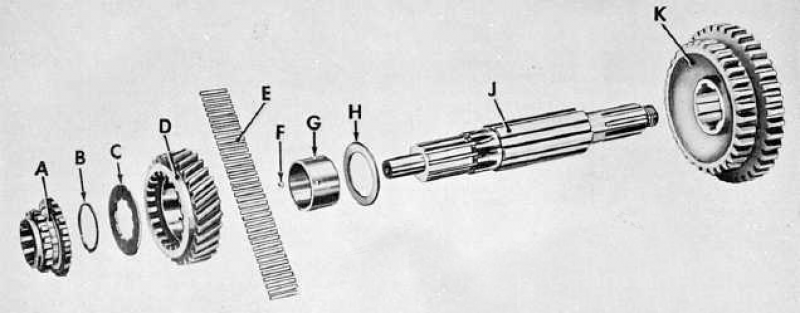 In 1964, Toyota Motor Corporation introduced the Stout, an uncomplicated pickup truck celebrated for its simplicity and reliability. Today, the Toyota Tacoma, direct descendant of the Stout, commands an astounding 65% share of the compact pickup segment (Tudor Van Hampton, “GM Rediscovers Smaller Trucks”, The New York Times, Oct. 10th 2014). The Tacoma sells so well that between 2003 and 2014 all of Toyota’s American competitors discontinued their own compact pickup models—from 2011 to 2014 the “Taco’s” only competition was the Nissan frontier.
In 1964, Toyota Motor Corporation introduced the Stout, an uncomplicated pickup truck celebrated for its simplicity and reliability. Today, the Toyota Tacoma, direct descendant of the Stout, commands an astounding 65% share of the compact pickup segment (Tudor Van Hampton, “GM Rediscovers Smaller Trucks”, The New York Times, Oct. 10th 2014). The Tacoma sells so well that between 2003 and 2014 all of Toyota’s American competitors discontinued their own compact pickup models—from 2011 to 2014 the “Taco’s” only competition was the Nissan frontier.
The first-generation 1995-2004 Tacoma created the model’s reputation for being all-but-indestructible, competent on- and off-road, cheap to own and practical. Having owned both trucks, I can say from experience that while the new truck is very good, it’s not as well designed as its predecessor.
Small size was a crucial design aspect of the first ‘Taco’. A narrow wheelbase made the truck extremely nimble off-road and capable of reaching areas full-size trucks cannot. It also made the truck light, which meant it was easy to drive in loose conditions like sand and snow where a larger vehicle might sink in and get stuck. Two four-cylinder engine options were possible because the truck was smaller, which meant those seeking fuel economy over power could purchase an efficient and cheap-to-own truck. The larger size of the new Tacoma makes it more comfortable but sacrifices all of the advantages of its predecessors’ smaller footprint.
The bed of a first-gen Tacoma is metal. This means it will accept any of several protective linings available, which, once applied, keep things placed in the bed from rearranging themselves between stoplights. It also means you can fasten things to it and they are basically attached directly to the truck. The second-gen truck uses a plastic bed that is impossible to line. It includes clever movable D-rings that allow one to secure the contents of their truck bed from any position. Unfortunately because these mounts are plastic, and mount to the plastic bed using a plastic interface, they effectively relieve themselves of duty when you apply around 100lbs. of force to them. Truck people can and do apply 100-plus lbs. of force, that shouldn’t be a secret to people who design trucks.
The interior of a first-gen Tacoma can be entirely removed with a pair of screwdrivers and a ratchet. Built from unapologetic grey plastic, the first-gen truck ‘s cab could be stripped and re-assembled by someone with zero knowledge of its construction in a matter of hours. Break something? You can probably replace it for the price of a quality T-shirt. In addition to being cheap to fix, the truck was easy to customize. In making their trucks unique, Tacoma owners built emotional connections. Need to pull the light-up subwoofer out of the backseat of your gen-two truck? That demands a trip to the dealership; hope you’ve been saving your shillings.
Other things the first-gen design got right are more technical. For instance the chassis made by legendary off-road outfitter Dana, the manual transfer case that can’t be defeated by a blown fuse, and the ability to engage the locking differential at any time on so-equipped trucks (second-gen trucks only allow this in 4wd low).
So is the second-generation Toyota Tacoma a design failure? Absolutely not considering the goal it’s designers were tasked with. For 2005, Toyota’s goal was to continue to dominate the segment that the first-gen truck was already leading and attract sales from full-size pickup buyers who don’t actually need the capabilities that only a full-size can deliver, namely heavy-duty towing and hauling. Customers more commonly need a commuter vehicle than they do an all-terrain vehicle, and don’t want to pay the high cost of fuel that full-size trucks demand.
With this goal in mind, it’s easy to understand the larger size of the gen-two truck. Most people won’t sacrifice comfort for the ability to scamper past an F-150-stopping boulder in a county with a four-digit population. Even after its growth spurt, the new truck is still easier to park than a full-sizer. Most people don’t take issue with things sliding around in the plastic bed because they don’t place things their very often, and the lighter plastic bed helps with fuel economy. Most people trust that a push-button 4wd system won’t fail, will never use a locking differential and don’t care that they can’t engage it in most gears (I never have).
If the compromises are warranted, why is it so easy for me to declare the first-gen Tacoma a better design than the second? Like it’s Stout progenitor, the first-gen was a focused, simple, small truck. It delivered a great experience for users who actually needed a very specific set of capabilities. The second-gen Tacoma is still a good truck, but it’s a compromise, an homage to the all-conquering forces of consumerism. It’s a little bit like the second set of Star Wars films—the special effects are better, but it doesn’t make you smile.
